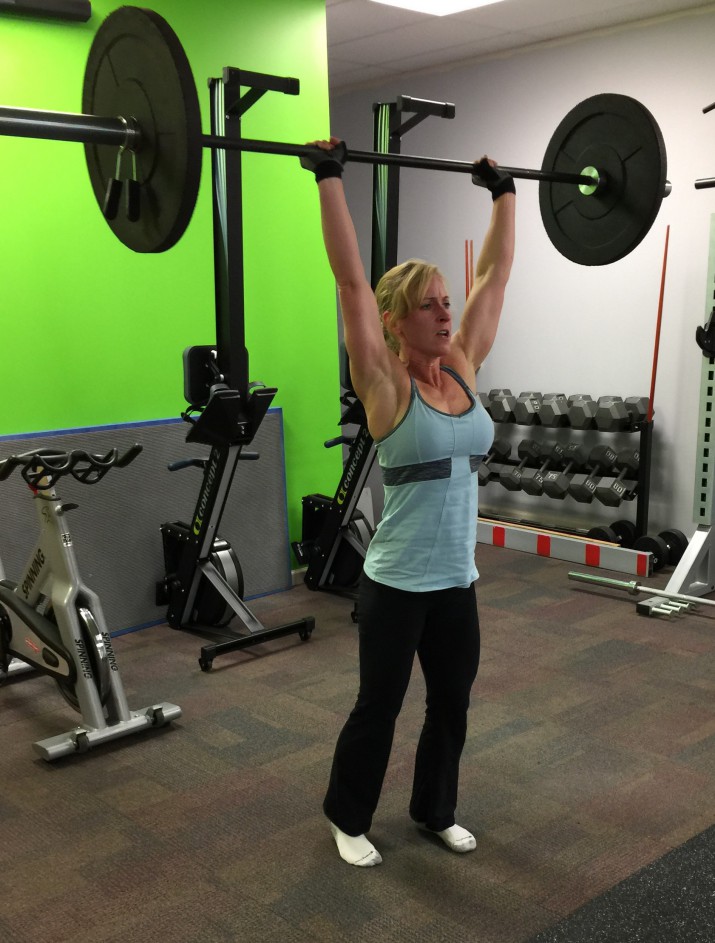Have you heard of metabolic training? Did you know that if you are metabolically exercising you can achieve better results in a shorter amount of time?

It is possible to reduce your pant size and not lose a large amount of weight on a scale.
This is what is called fat loss vs. weight loss. When you reduce your fat it is possible that your clothing sizes could change significantly however the scale may not change much at all.
A few studies comparing intermittent high intensity exercise vs. continuous moderate exercise consistently show a greater excess post exercise oxygen consumption (EPOC), or what some refer to as the after burn, response for higher intensity, intermittent exercise.
One study in particular found on PubMed.gov states “more prolonged and substantial EPOC has been found after hard- versus moderate-resistance exercise”
Another study, “Effect of an acute period of resistance exercise on excess post-exercise oxygen consumption: implications for body mass management.” by Schuenke MD, Mikat RP, McBride JM, found that in the case of changing your body mass in terms of fat vs overall weight, body fat was reduced and EPOC was increased after a high intensity resistance based workout.
The EPOC has been found to stop within 10 minutes after a moderately paced workout.
A moderately paced workout could mean staying in the “fat burning zone” consistently for 45-60 minutes. Does this mean that your “fat burning zone” is incorrect? Well let’s look at it this way, have you noticed that when you first start a program after being sedentary and starting a workout, it doesn’t take much to get out of breath, yet when you improve, it takes a little more to get out of breath.
This indicates our bodies adapt to the moderate cardiovascular exercise that is consistently the same, however if you continually change the workouts with high intensity resistance your body can never adapt and you can create an environment of confusion perfect for the EPOC or after burn.
A metabolic workout is all about the after burn
The difference between moderate long intensity vs. high intensity interval short training is the burn that occurs in the 24 to 48 hours after your workout.
What does this mean? This means that your metabolism continues to run at a higher pace, burning much longer than the moderate aerobic workout. This does mean that spending endless hours on a treadmill, elliptical or bike is not necessary in order to change your physique and reduce your body fat. It also means that intensity is the key, pushing yourself to the point of being out of breath, then catching your breath and pushing again.
A metabolic workout is meant to be efficient and not long in nature.
If you are riding your bike, you need to increase the tension and take a few hills, but a key to metabolic training is the ability to recover between bursts. Most well conditioned athletes are only able to stay at a high intensity for a maximum of 60 seconds, which means the average exercisers can only handle 20-30 seconds maximum of high intensity at a time.
An example of a metabolic workout would be a Tabata workout, 20 seconds of work with a 10 second rest for a total of 8 rounds, such as doing squats with weights or jump squats for eight rounds of 20 seconds of work and 10 seconds of rest. If you are well conditioned or wanted to work on different body parts you could string a few Tabata workouts together to create a 20 to 30 min workout.
Another example, set a time limit of up to 20 minutes, pick 4 exercises using dumbbells or 4 different body part machines and go from one to the next in circuit style, not resting until you needed the rest.
The key to these workouts is to utilize your large muscle groups such as your back, legs, and chest in combination with your smaller muscle groups, go for the total body workout; combine the moves together, such as doing a squat with a row, lunge with overhead press, push-up with a twist and if you want to add a burst, add jumping jacks into the circuit.
These types of combinations should be done at your level of ability, yet should be challenging, in other words you should be going for a heavy challenging weight, a weight that you can only lift for 10-12 repetitions.



